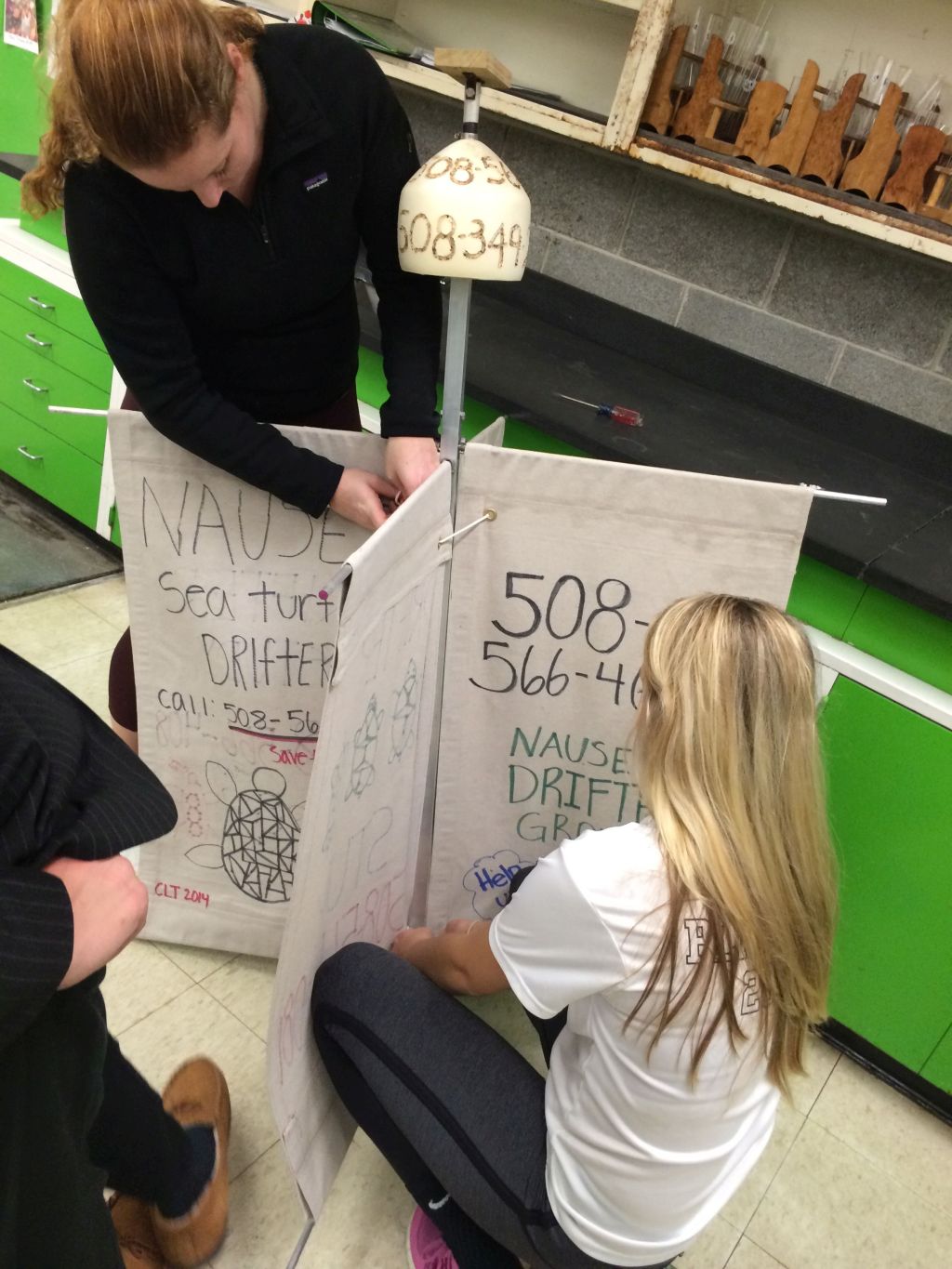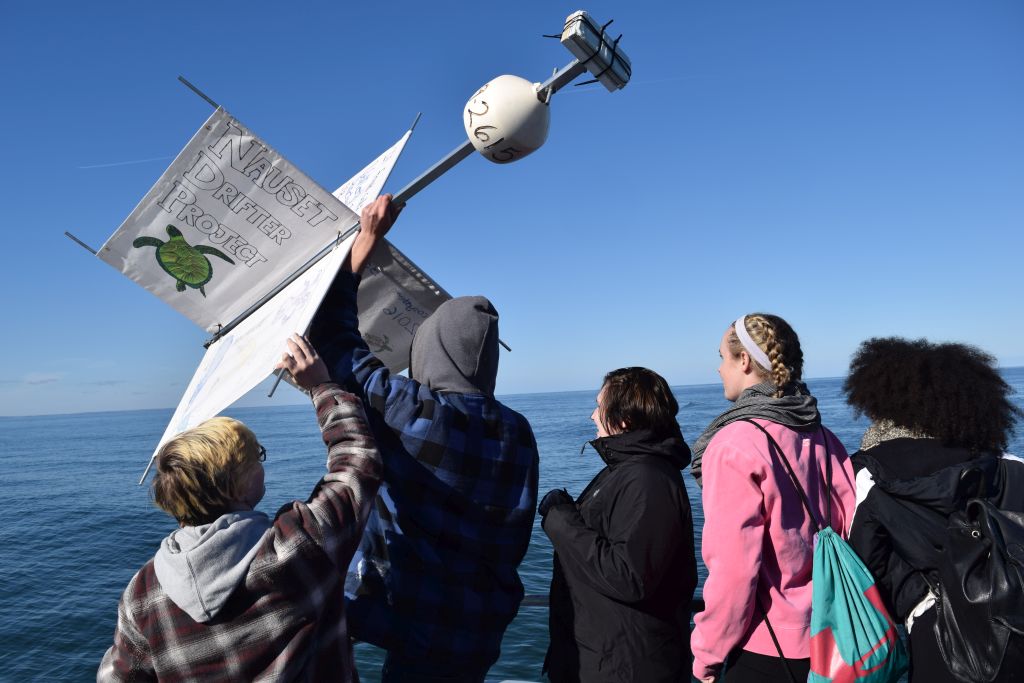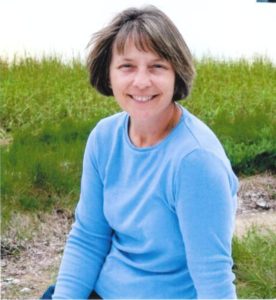Wellfleet Bay’s sea turtle rescue program is not just about retrieving endangered turtles from local beaches.
The annual cold-stun phenomenon also presents an opportunity to engage local students in research projects. Wellfleet Bay is in the second year of a three-year grant from the National Oceanic and Atmospheric Association (NOAA) in cooperation with the Gulf of Maine Institute that enables the sanctuary to continue to work with high school students building and deploying drifters during the sea turtle cold stunning season (for background see Nauset High Students Present Study of Currents).
Drifters are boxy objects made of intersecting aluminum rods with canvas sails. A GPS device sits atop a buoy that remains above water. The rest of the drifter floats underwater and is designed to mimic the movements of a cold-stunned or partially cold-stunned sea turtle.

Like cold-stunned turtles, drifters usually end up coming ashore, so these Nauset students make sure their contact information is prominently displayed to increase the chances of retrieval.
The drifter program was started in 2014 when I was still a teacher at Nauset Regional High School. Now I’m retired but I still get to work on this project which now also includes Monomoy Regional High School.
The sanctuary arranged for each school to go on a boat to deploy their drifters. A relatively mild November provided ideal sea conditions.

A new drifter is poised for deployment! (photo by Olivia Bourque)
Once drifters are in the water, students can go to a web site to keep track of where their drifter is moving. Here is a link to the high schools’ online map. http://www.nefsc.noaa.gov/drifter/drift_wbws_2016_2.html.

9 drifters were deployed this fall by Nauset and Monomoy students and Wellfleet Bay staff. The green icons show drifters that remain active.
We now have several years’ worth of drifter data. The next steps are to find ways to use it to answer scientific questions. On November 9th, our primary investigator and “father” of the drifter program, James Manning of NOAA, came to Wellfleet Bay to work with teachers from around the Cape and to look at using drifter data to introduce students to data analysis. We also learned about ocean modeling. Here in the northeast there are a few models to choose from but one that we work most closely with is the UMASS/WHOI Finite Volume Community Ocean Model (FVCOM). It’s part of the Northeast Coastal Ocean Forecast System which has graphical displays of model output. This means students will be able to compare their drifter tracks with predicted ocean conditions. Especially exciting is the fact that student drifter data is also being added to the models to help make the models more accurate for our local area.
The drifter project is an experience that seems to have a memorable impact on students. Many use their experiences in their college application essays. Wellfleet Bay Wildlife Sanctuary is helping to bring real science experiences to local high school students.

The arrow marks what little of a drifter remains above water: the buoy and the GPS device. (photo by Karen Dourdeville)
Valerie Bell recently retired from Nauset Regional High School where she was a science teacher. Currently, she works as a part-time educator for Wellfleet Bay and as a seasonal ranger for the Cape Cod National Seashore.

Valerie Bell

